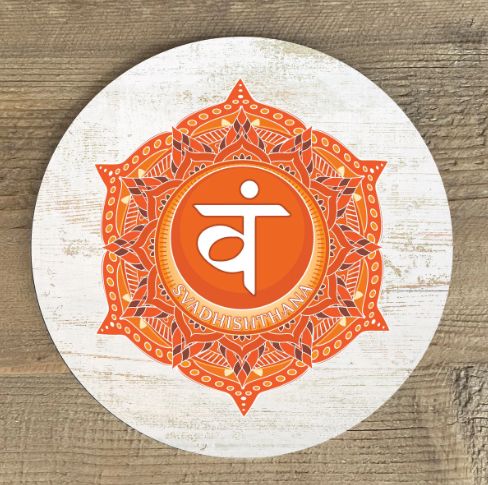The Sacral chakra, also known as the Svadhisthana in Sanskrit, is the second of the seven chakras located in the lower abdomen, just below the navel. The word Svadhisthana is a combination of two words: Sva, which means one’s own, and Adhisthana, which means dwelling place or abode. The Sacral chakra is associated with creativity, sexuality, and emotions, and is responsible for providing us with a sense of pleasure, joy, and abundance.
Physical Location and Symbolism
The Sacral chakra is located in the lower abdomen, just below the navel, and is associated with the color orange. The symbol of the Sacral chakra is a lotus flower with six petals, which represents the six aspects of the chakra: passion, creativity, sexuality, pleasure, joy, and abundance. The lotus flower is a symbol of purity and enlightenment, and its six petals represent the six fundamental psychological states: desire, anger, greed, delusion, pride, and envy.
Functions and Characteristics
The Sacral chakra is responsible for providing us with a sense of creativity, passion, and pleasure. It governs our relationship with ourselves and others, including our ability to connect intimately with others and our ability to experience pleasure and joy in our lives. The energy of the Sacral chakra is often described as fluid, dynamic, and sensual, and it is associated with the element of water.
The Sacral chakra is also responsible for regulating our sexual energy and reproductive system, as well as our ability to express ourselves creatively. When the Sacral chakra is balanced, we feel connected to our emotions, our sexuality, and our creativity, and are able to express ourselves authentically and freely.
Imbalances and Healing
When the Sacral chakra is imbalanced, it can manifest in various physical, emotional, and mental symptoms. Physical symptoms can include menstrual issues, lower back pain, and urinary tract infections. Emotional symptoms can include lack of creativity, difficulty connecting with others, and sexual dysfunction, while mental symptoms can include feelings of guilt, shame, and low self-worth.
To heal the Sacral chakra, it is important to focus on practices that stimulate creativity, pleasure, and emotional expression, such as dance, art, and journaling. Other techniques for healing the Sacral chakra include working with crystals, such as carnelian or orange calcite, which are believed to have energizing properties, and incorporating foods that support reproductive health and sexual energy, such as fruits and nuts.
Conclusion
The Sacral chakra is a vital energy center that is responsible for providing us with a sense of creativity, passion, and pleasure. When this chakra is balanced, we are able to connect intimately with others, express ourselves authentically, and experience joy and abundance in our lives. Imbalances in the Sacral chakra can lead to a range of physical, emotional, and mental symptoms, but by focusing on practices that stimulate creativity, pleasure, and emotional expression, we can heal the Sacral chakra and achieve a sense of balance and harmony in our lives.
What is the Sacral Chakra?

